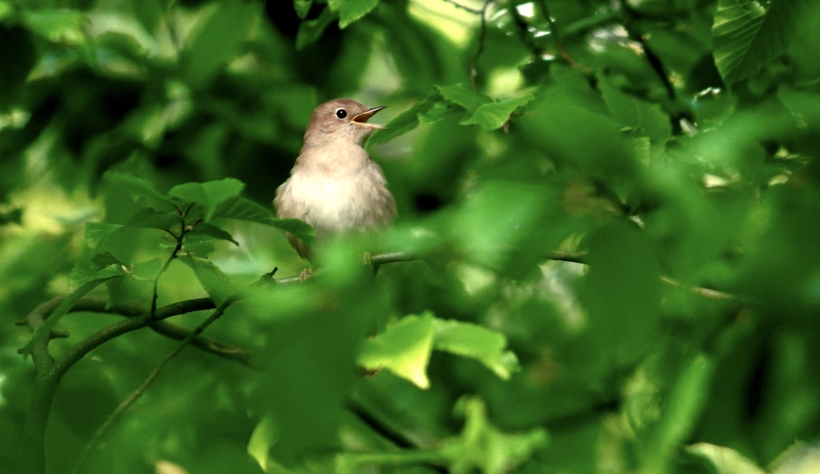Travelers from every country in the world came to the city of the Emperor, which they admired very much, as well as the palace and gardens; but when they heard the nightingale, everyone declared its song to be the most wondrous thing of all. This was big news to the Emperor. “What is this?” he asked. “I know nothing of any nightingale.”
Thus begins Hans Christian Andersen’s bird-themed parable of Nature, which sustains us, versus Artifice, which leaves us hollow. In spirit, the instrumentalist, composer, and author David Rothenberg’s documentary Nightingales in Berlin, directed by Ville Tanttu and released in 2019, is very much on the same page.
It was in the endless twilight of a summer night in Helsinki that Rothenberg first zeroed in on the “chirps, whirrs, trills, clicks, whistles, twitters, and gurgles” (his list) of the nightingale. Oh, someone told him when he asked, that’s the satakieli—literally, “one hundred tongues.” As fellow enthusiasts from many disciplines tell us over the course of the film, nightingales are musicians. They don’t talk, they perform. A single bird’s repertoire is gigantic, consisting of some 200 hundred snippets as brief as three seconds and as long as 20, combined in shifting patterns humans have yet to figure out.

In addition to talk, Nightingales in Berlin showcases human vocal, acoustic, and electronic jamming triggered by the birds. All exemplify the “interspecies music” Rothenberg—a distinguished professor of philosophy and music at the New Jersey Institute of Technology—would love all the world to cultivate. “Some people say you shouldn’t touch birds even with sound, but I think it’s a wonderful idea. They hear so much noise! Give them pleasure. Play music for them.” (He riffs with whales and insects, too.)
You’ll come away well stocked with facts. Facts about the birds’ migration patterns from East Africa up through Persia and the Camargue to Northern Europe. Facts about which birds sing (the males) and which listen (females and other males). Facts about where they perch (within a territory, always on the same tree). And so on and on.
Most of all, though, expect to fall under the nightingale’s musical spell. Turns out these visually unassuming virtuosi bear but slight resemblance to the elegiac rhapsodists described by human poets in cultures and languages of many lands. As one researcher puts it, a nightingale is loud, “techno,” special, raw—exciting! For contrast, tune into the song of the blackbird—“elevator music,” an expert tells us, nice but boring. Once you’ve heard the nightingale, you’ll never fail to recognize it, as full of surprises as its song can be.
Thanks to abundant green spaces, Berlin is a magnet for nightingales, and as such a world center for nightingale research, too. Yet your average civilian is oblivious. “With our media overload,” Rothenberg muses, “we’ve lost sensitivity to beauty right around us. You don’t need special equipment or technology. You just have to stop talking.”
Nightingales in Berlin is available for streaming on Vimeo
Matthew Gurewitsch writes about opera and classical music for AIR MAIL. He lives in Hawaii

